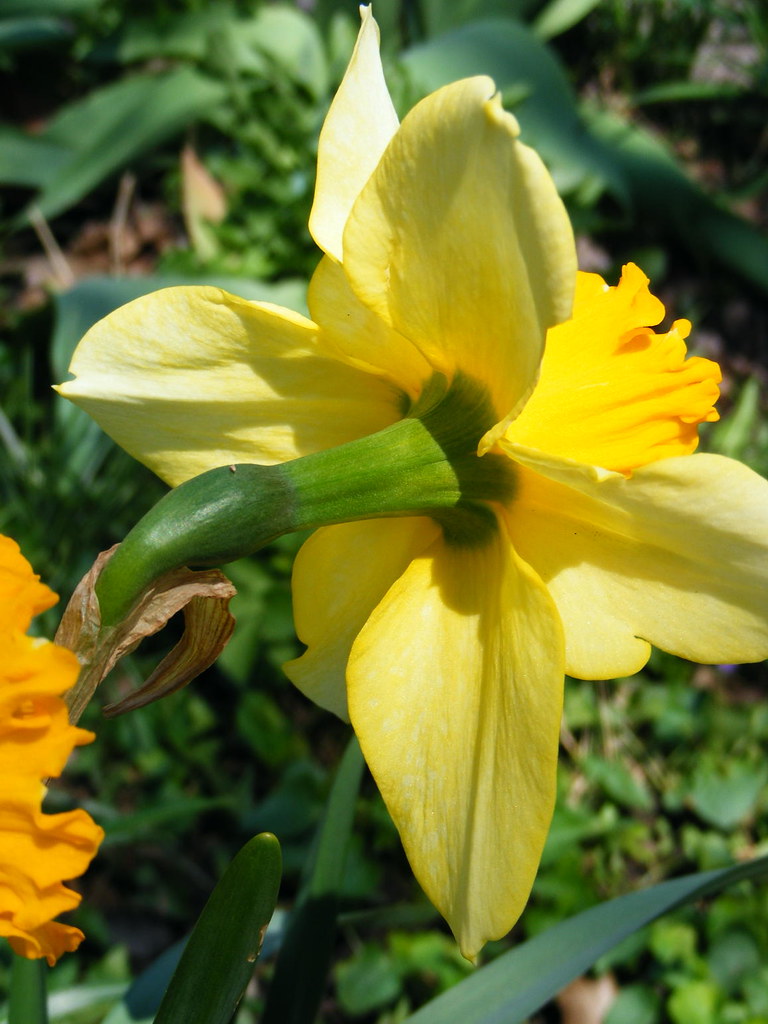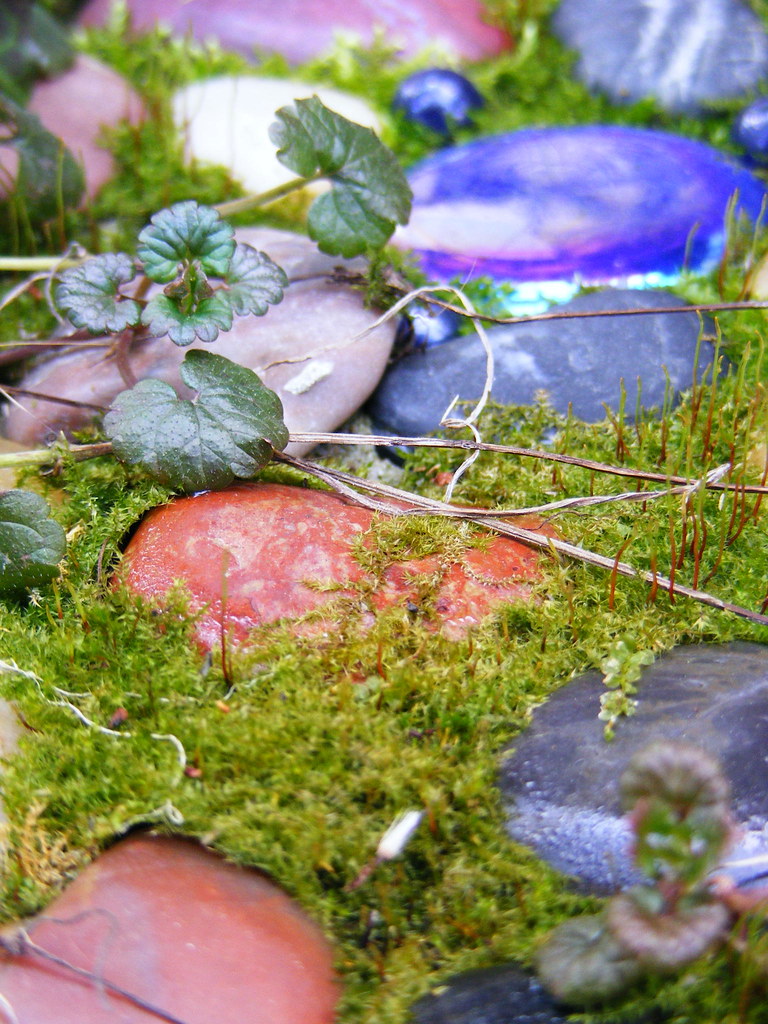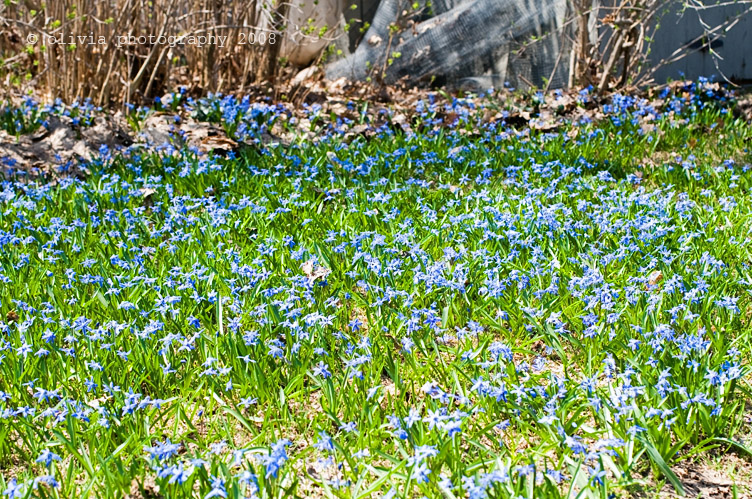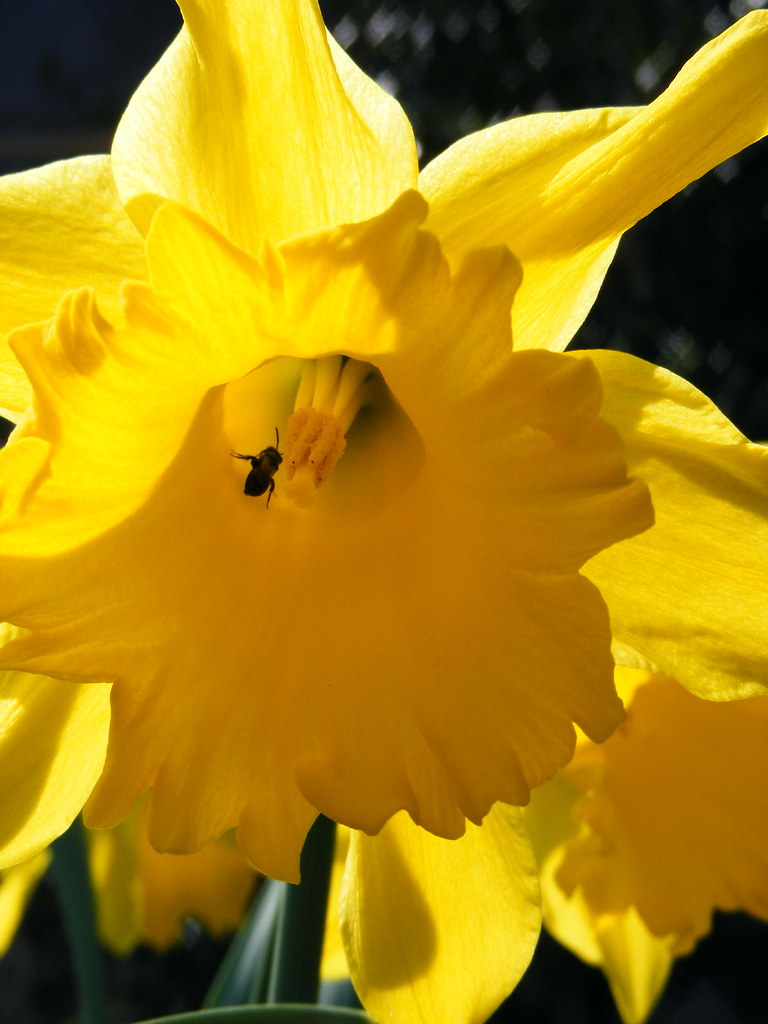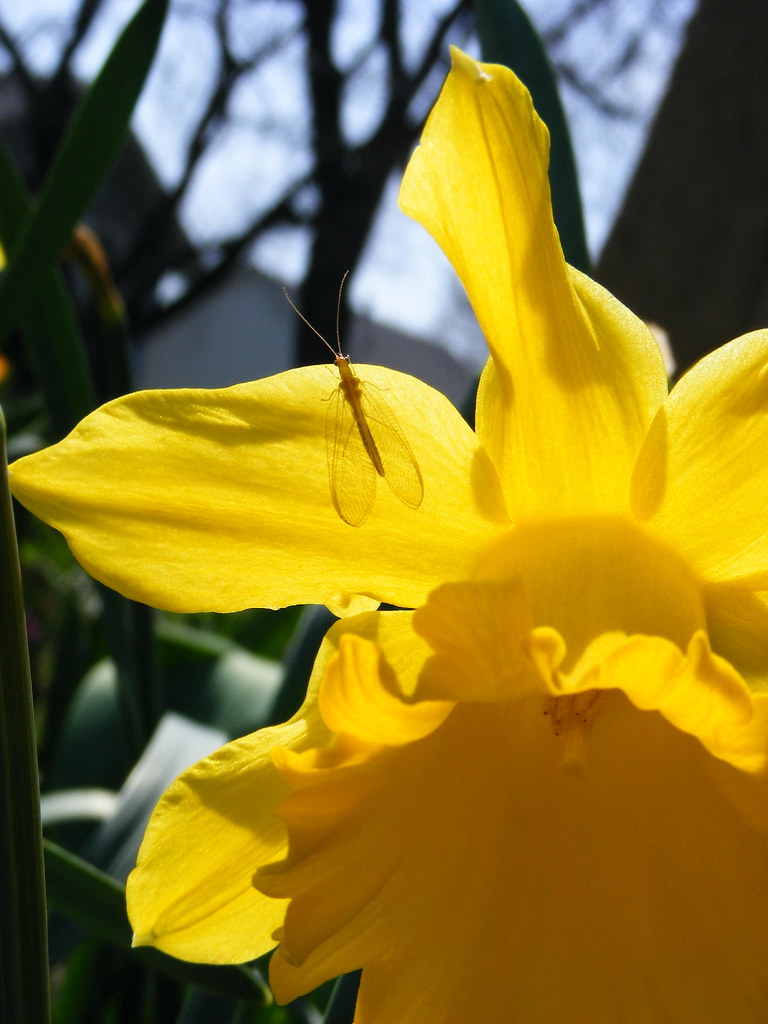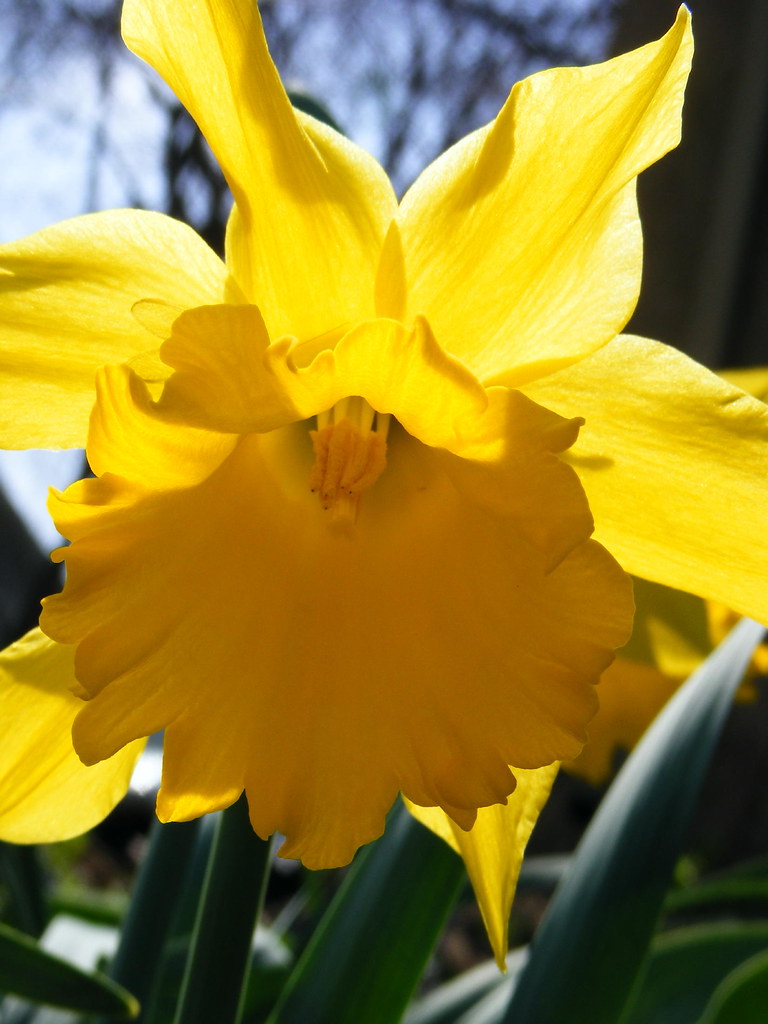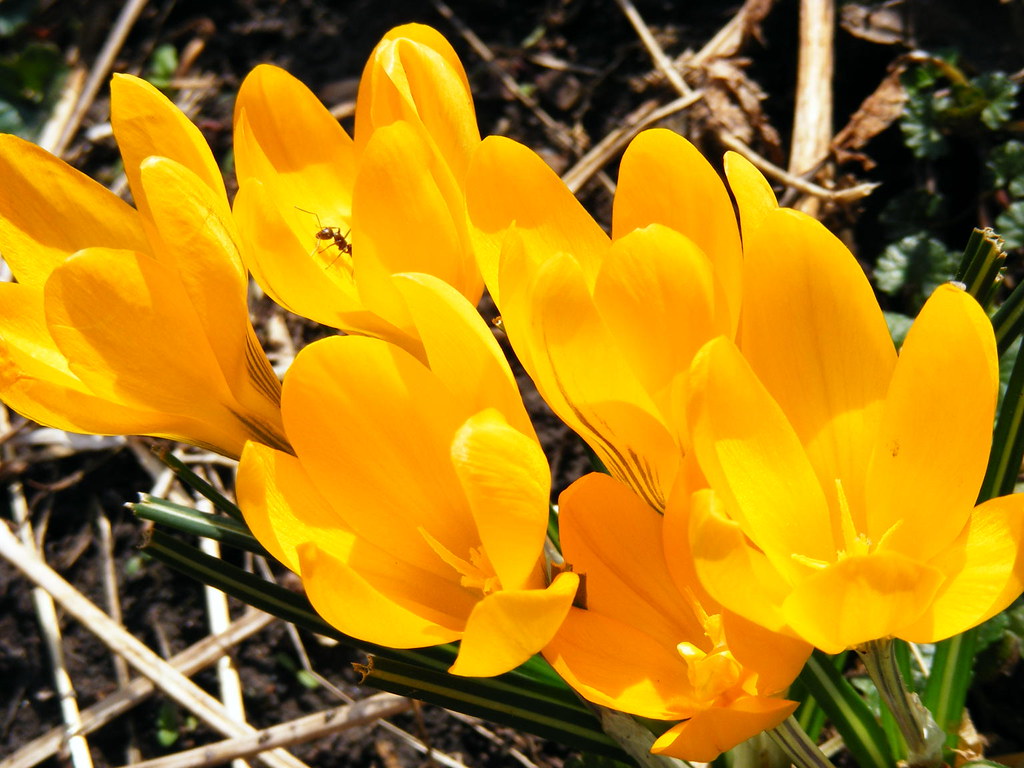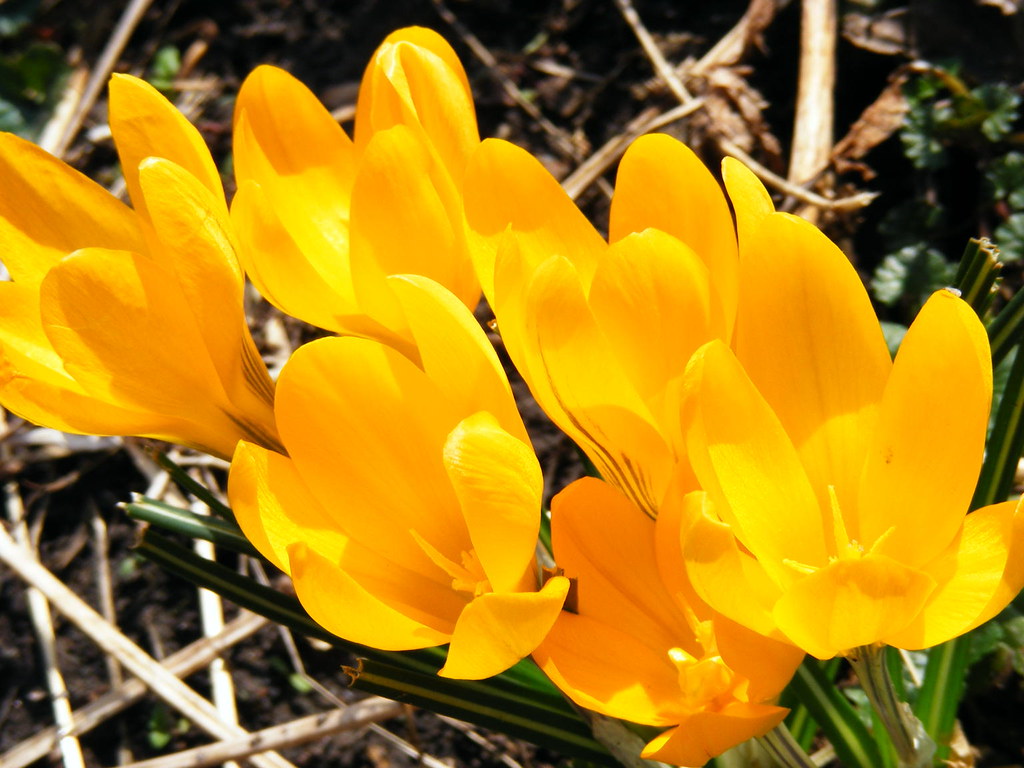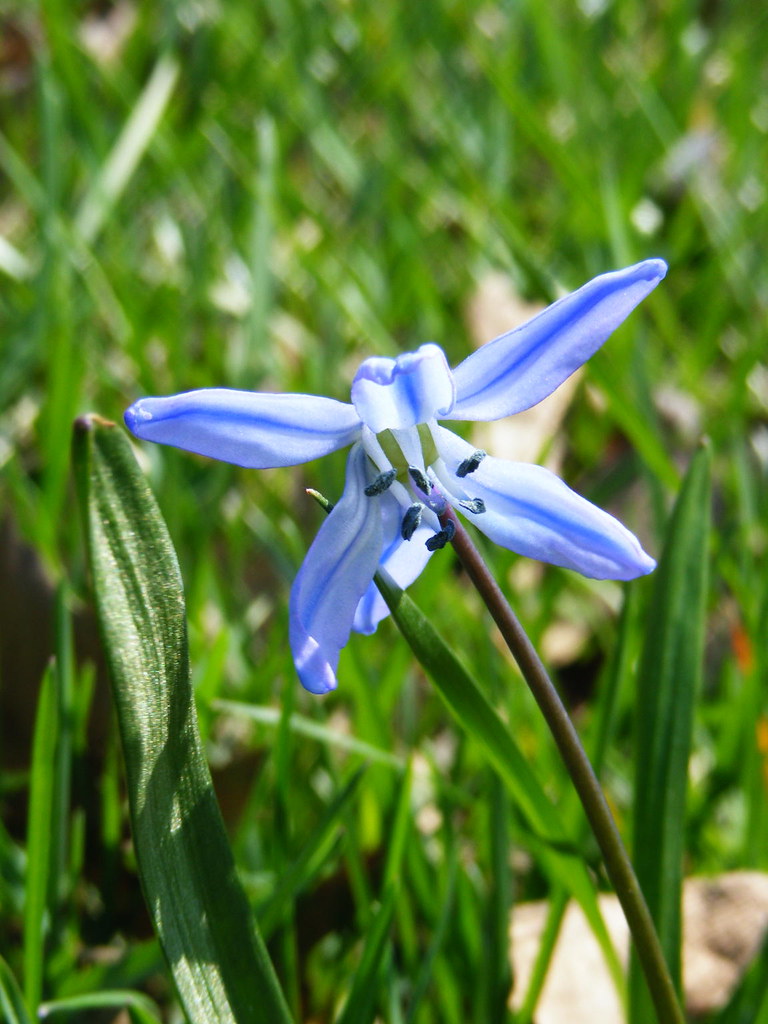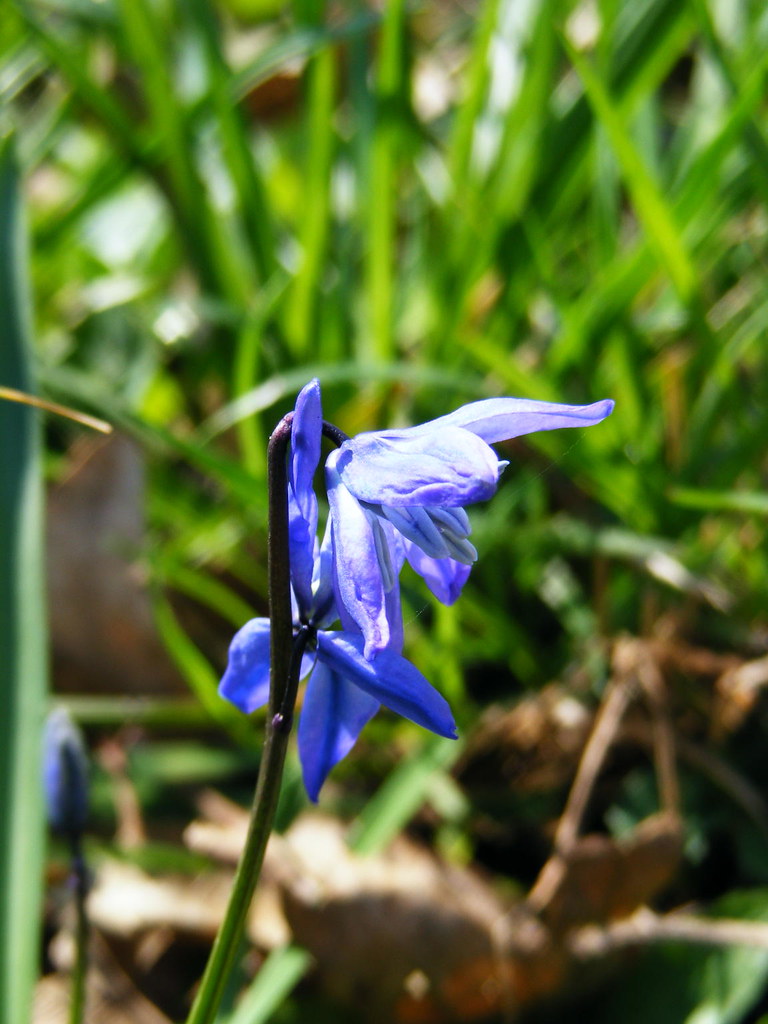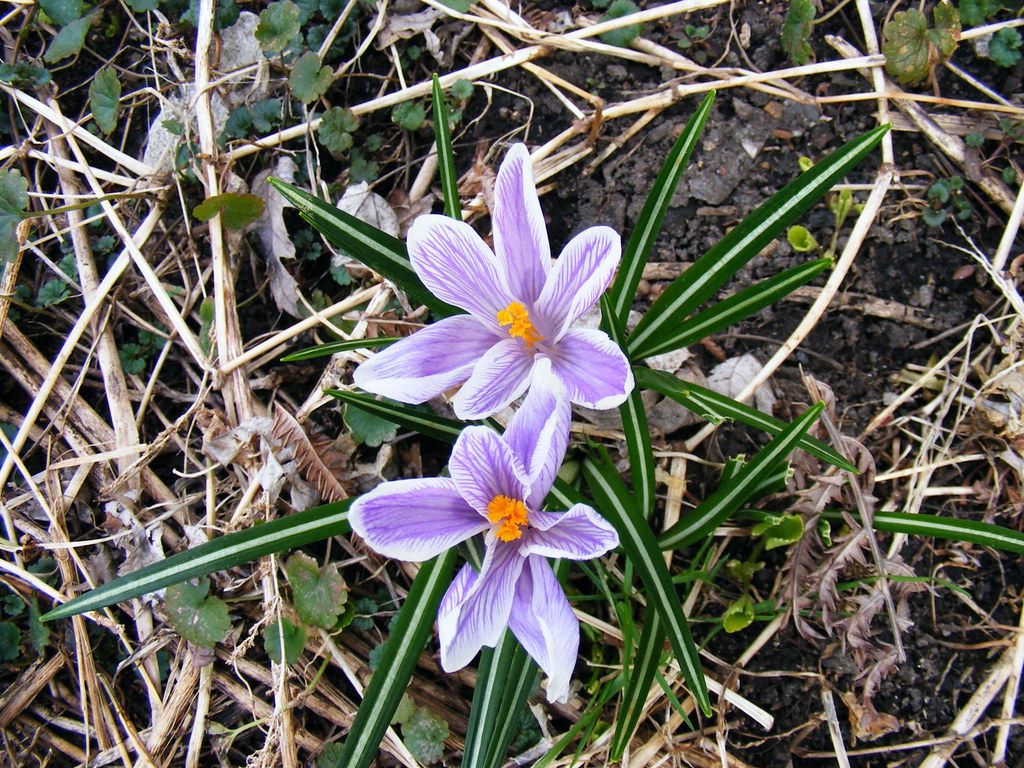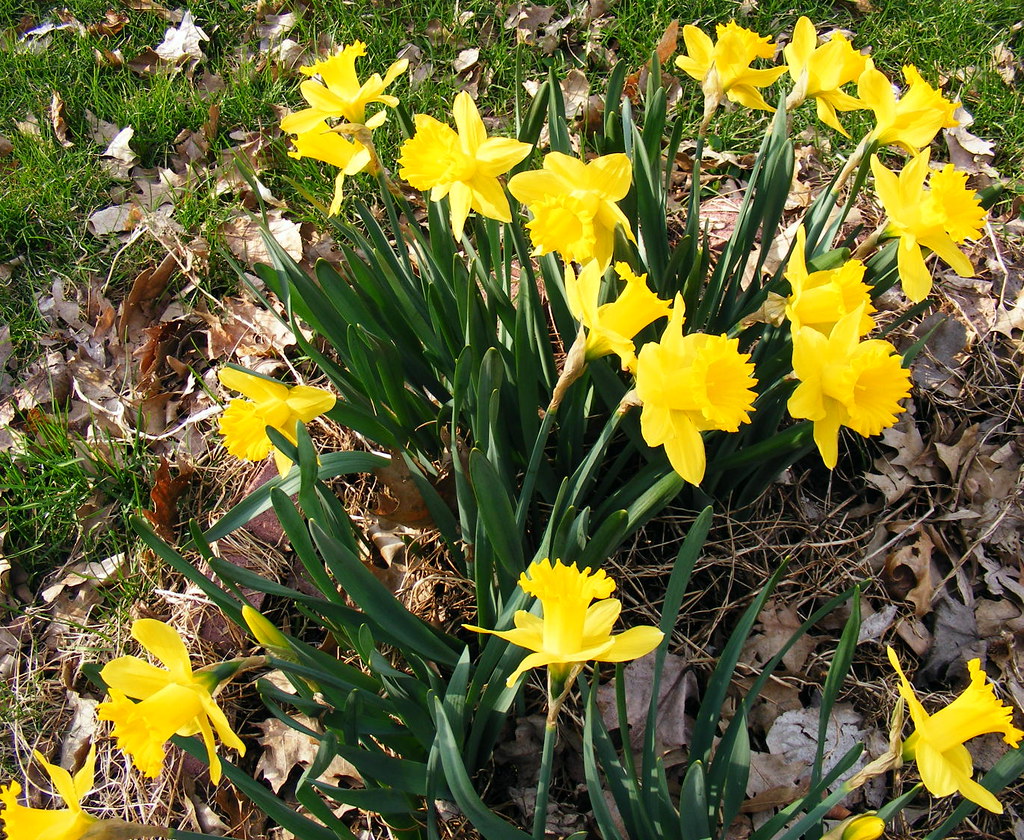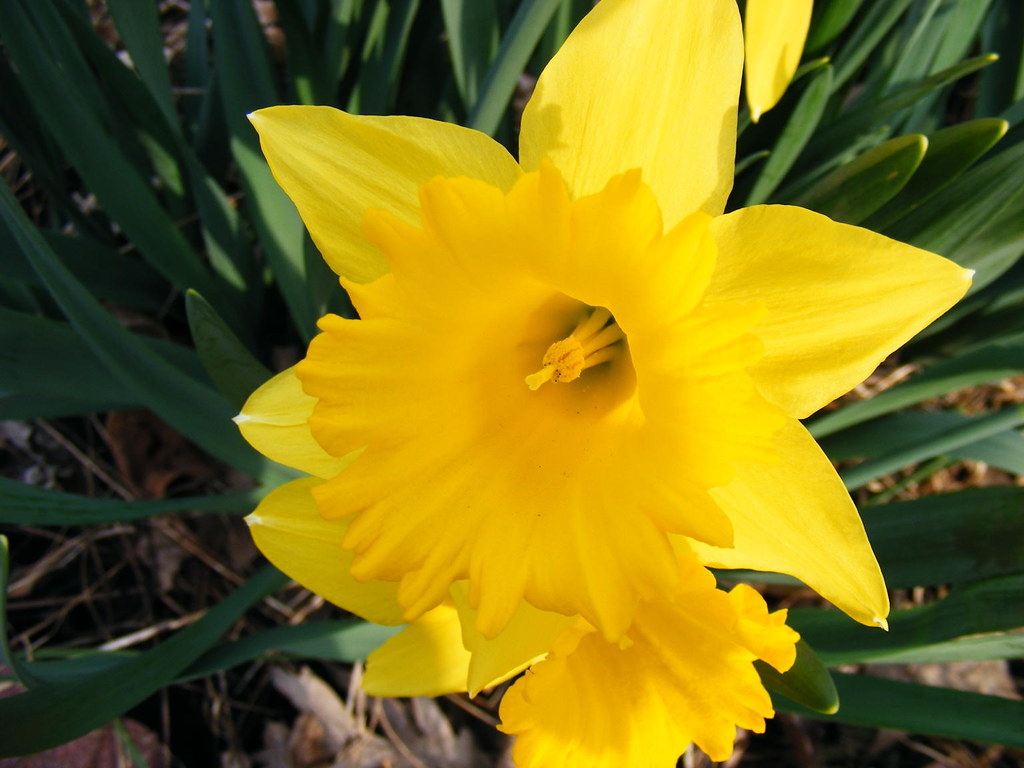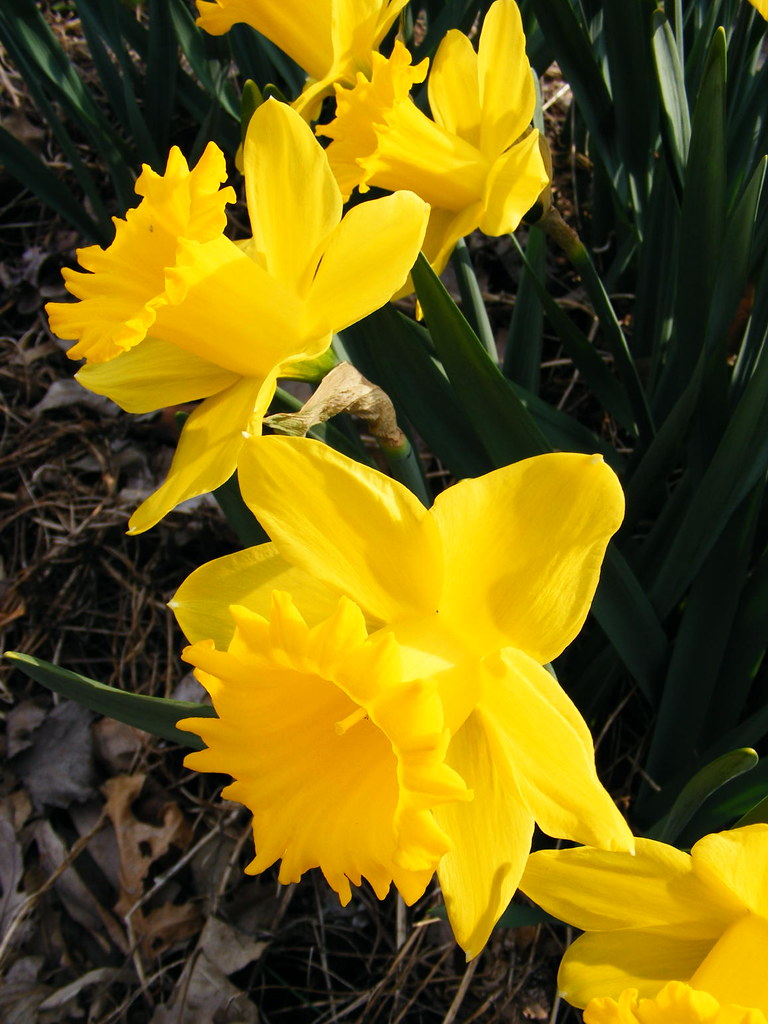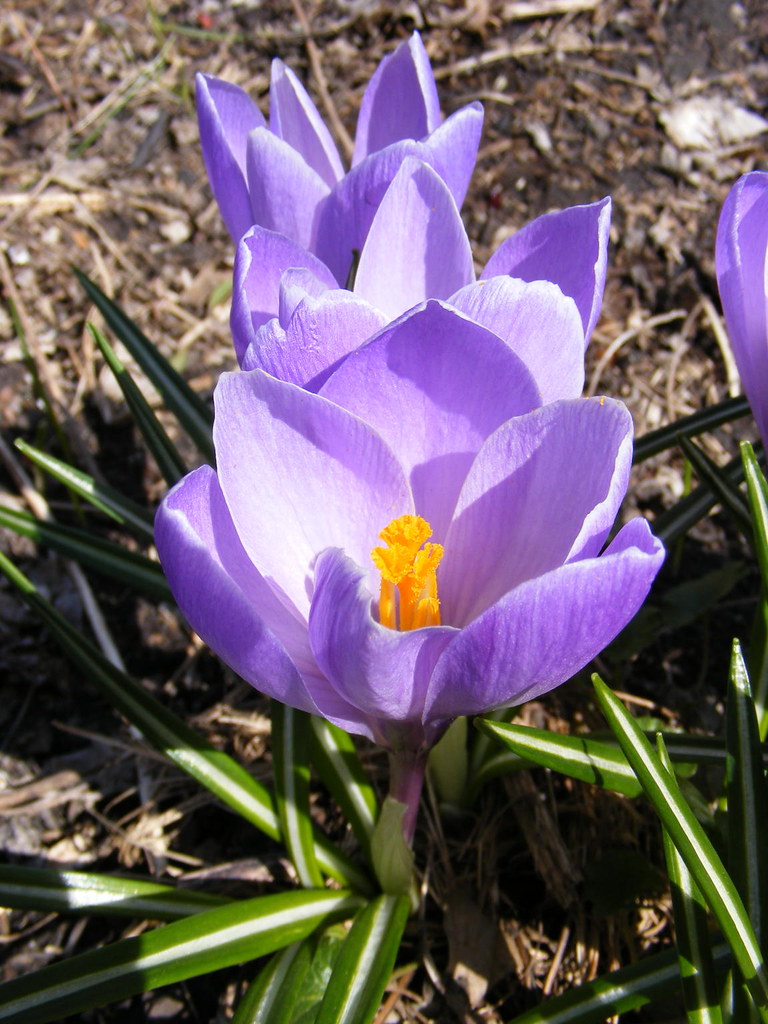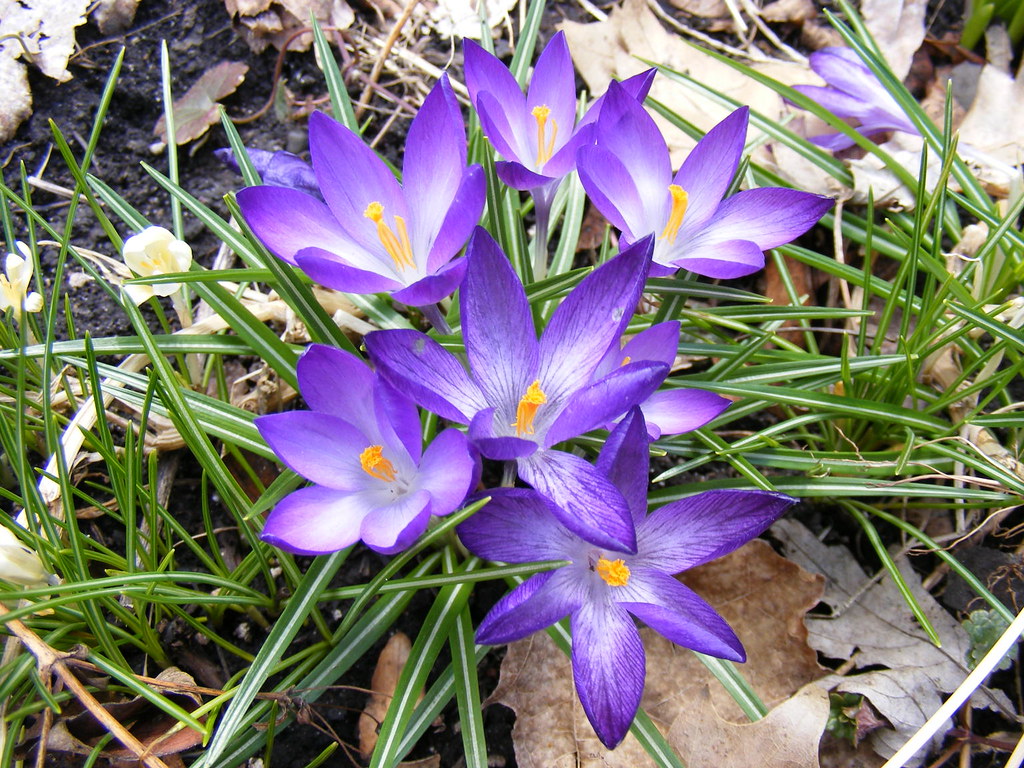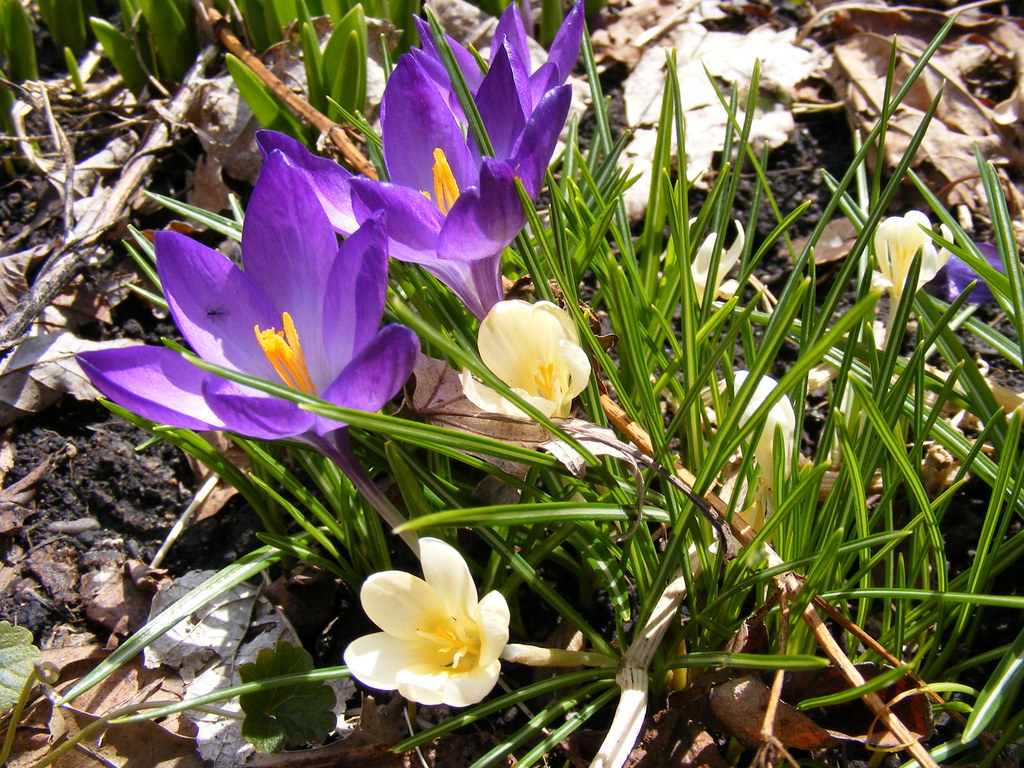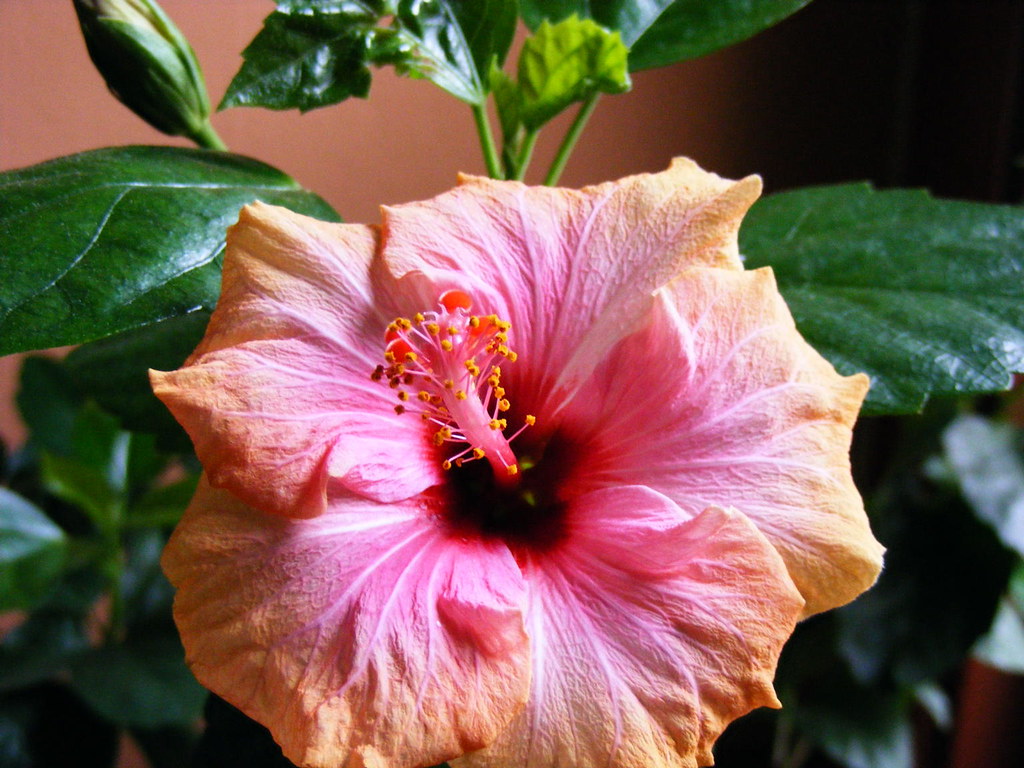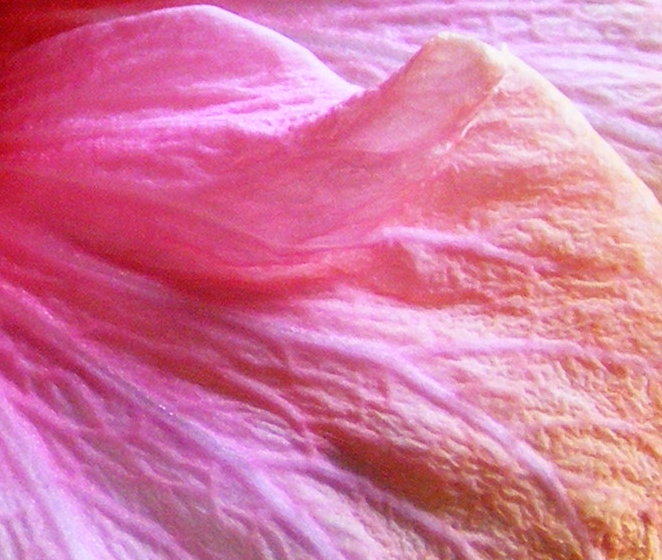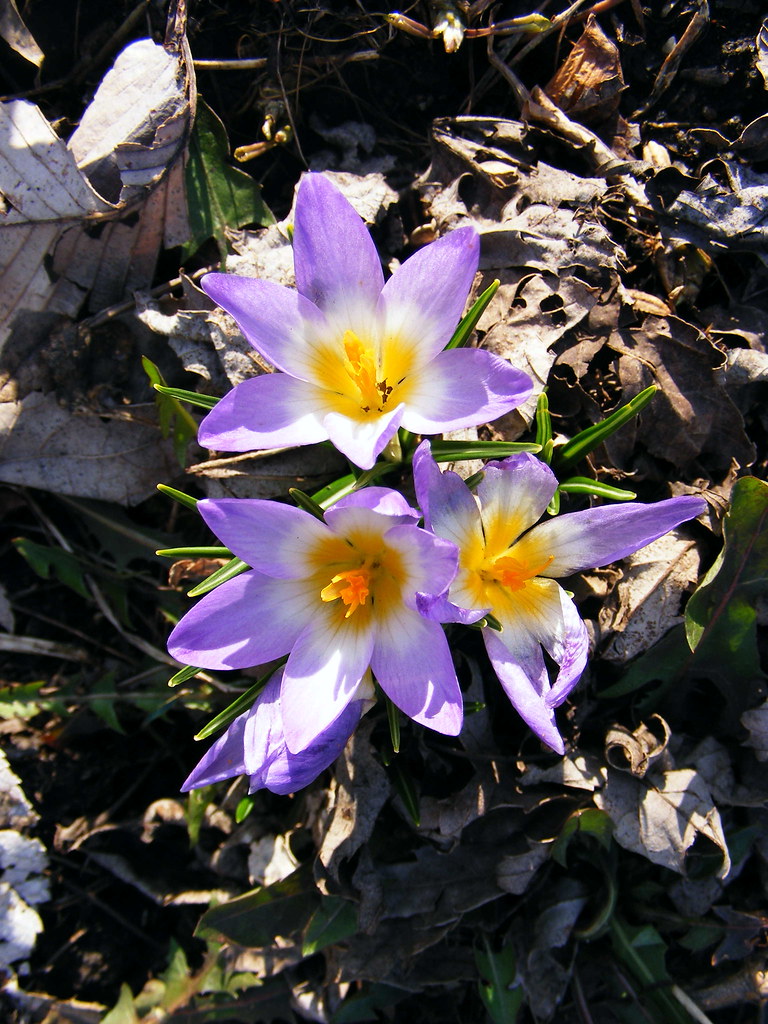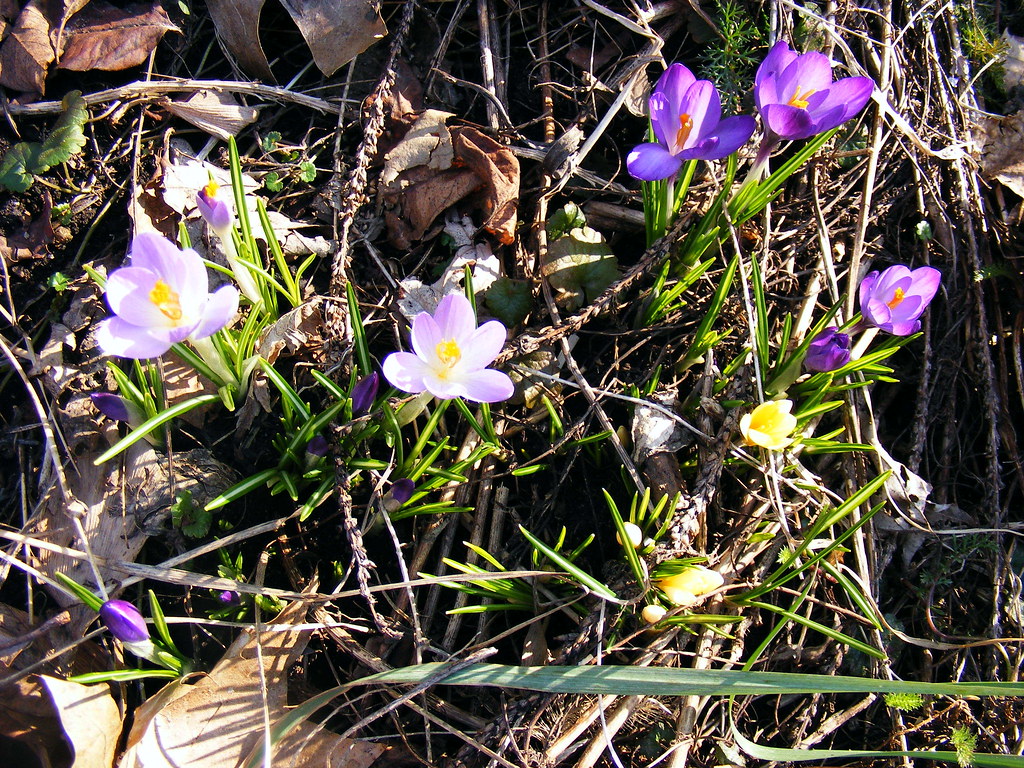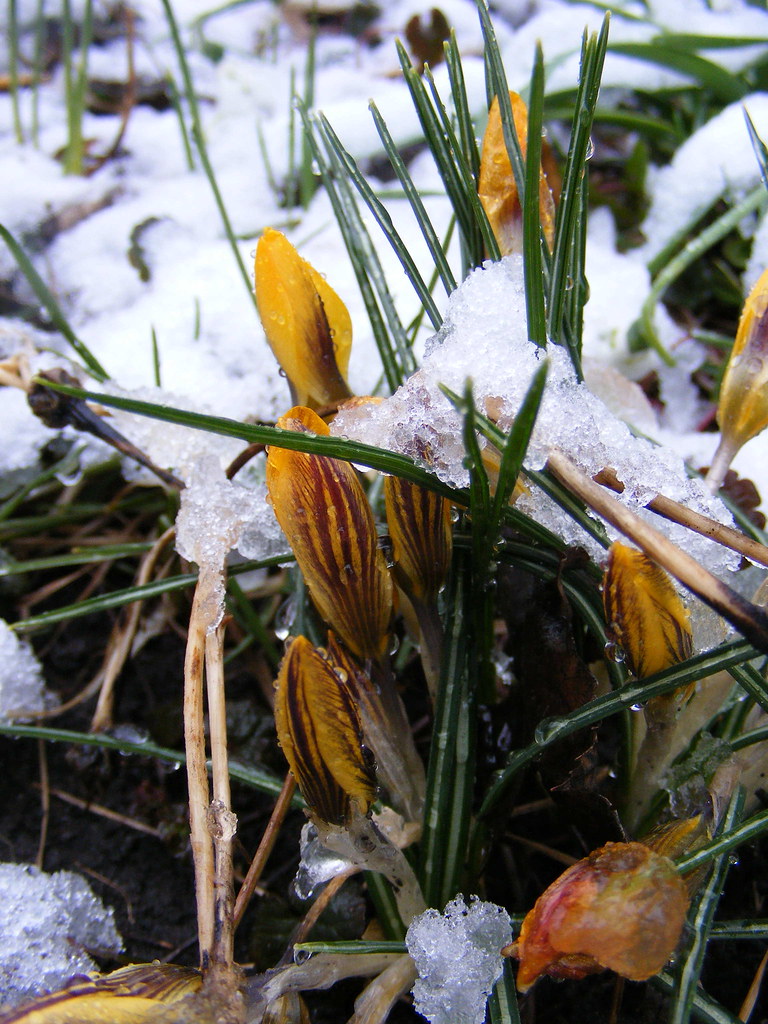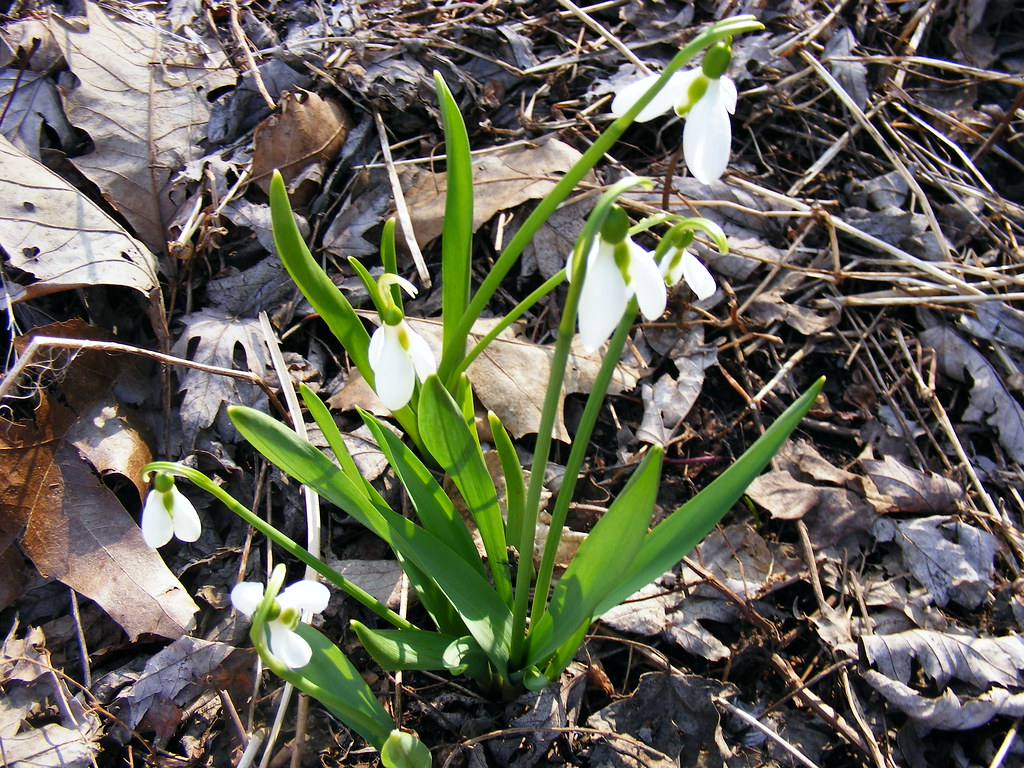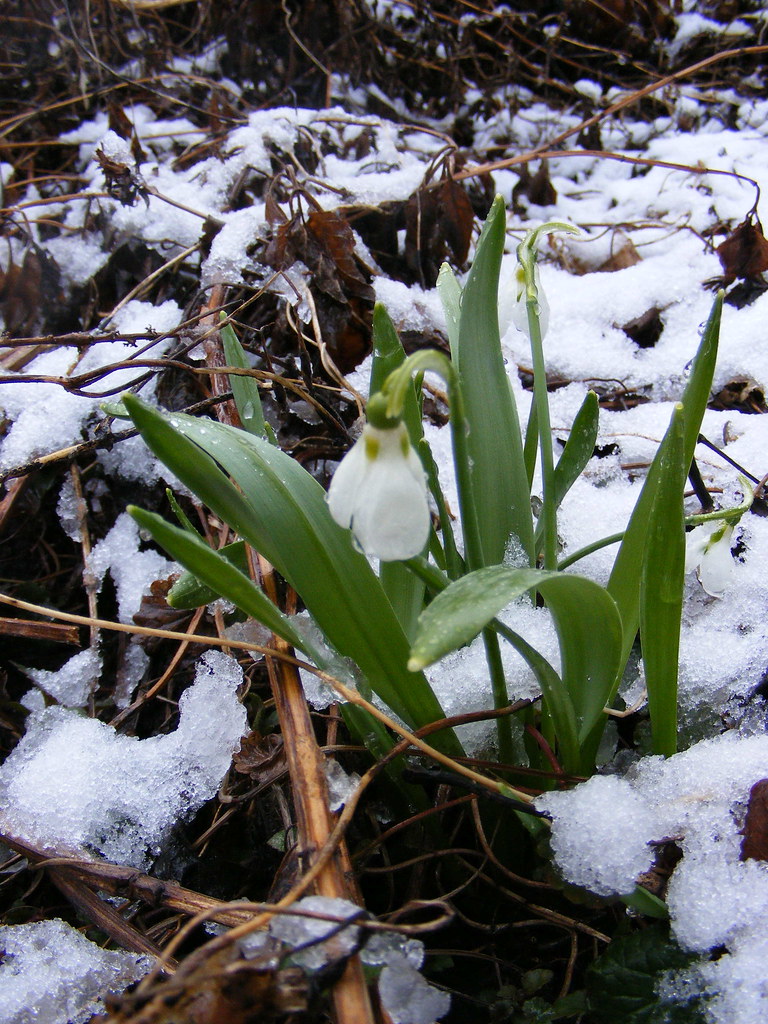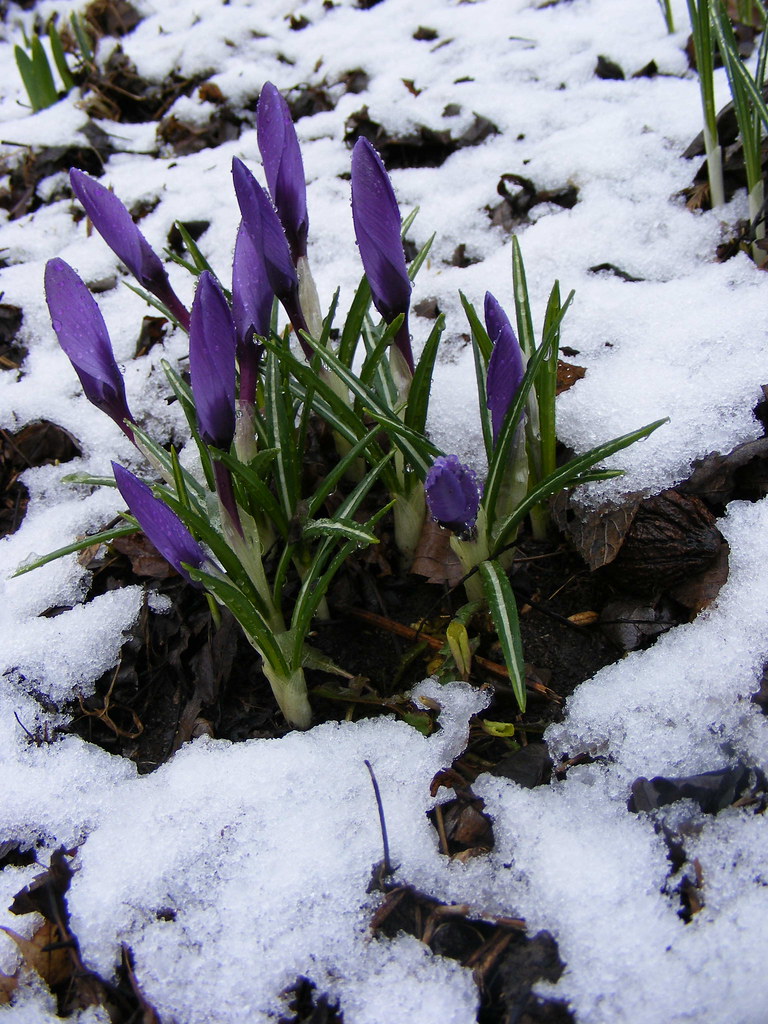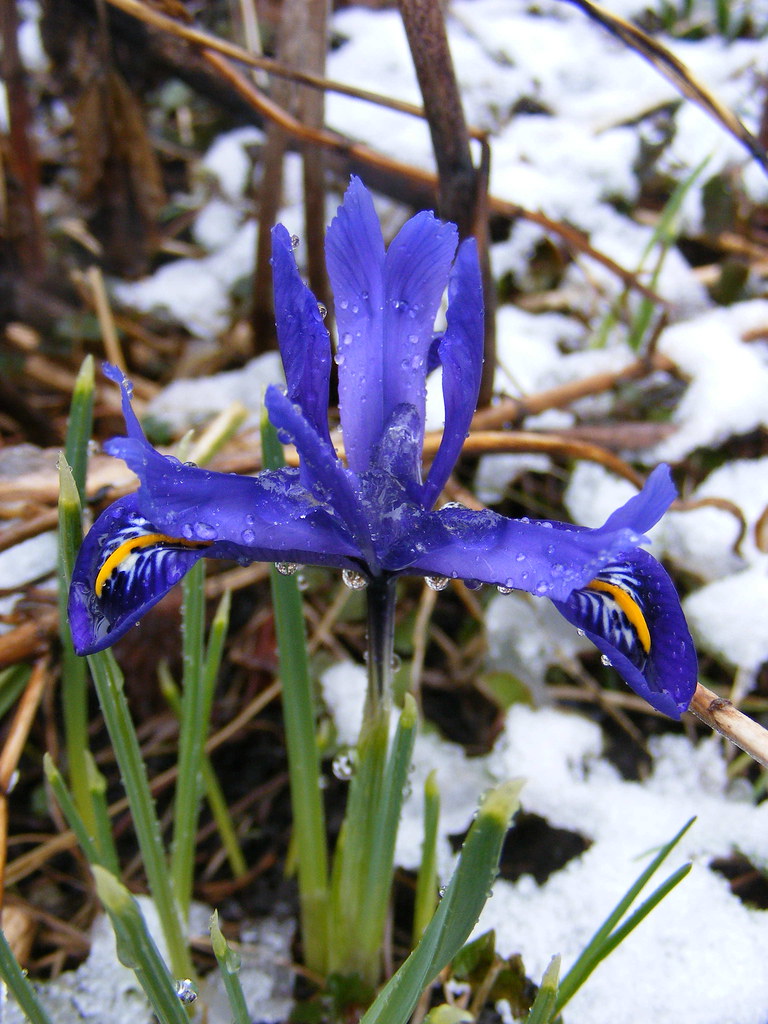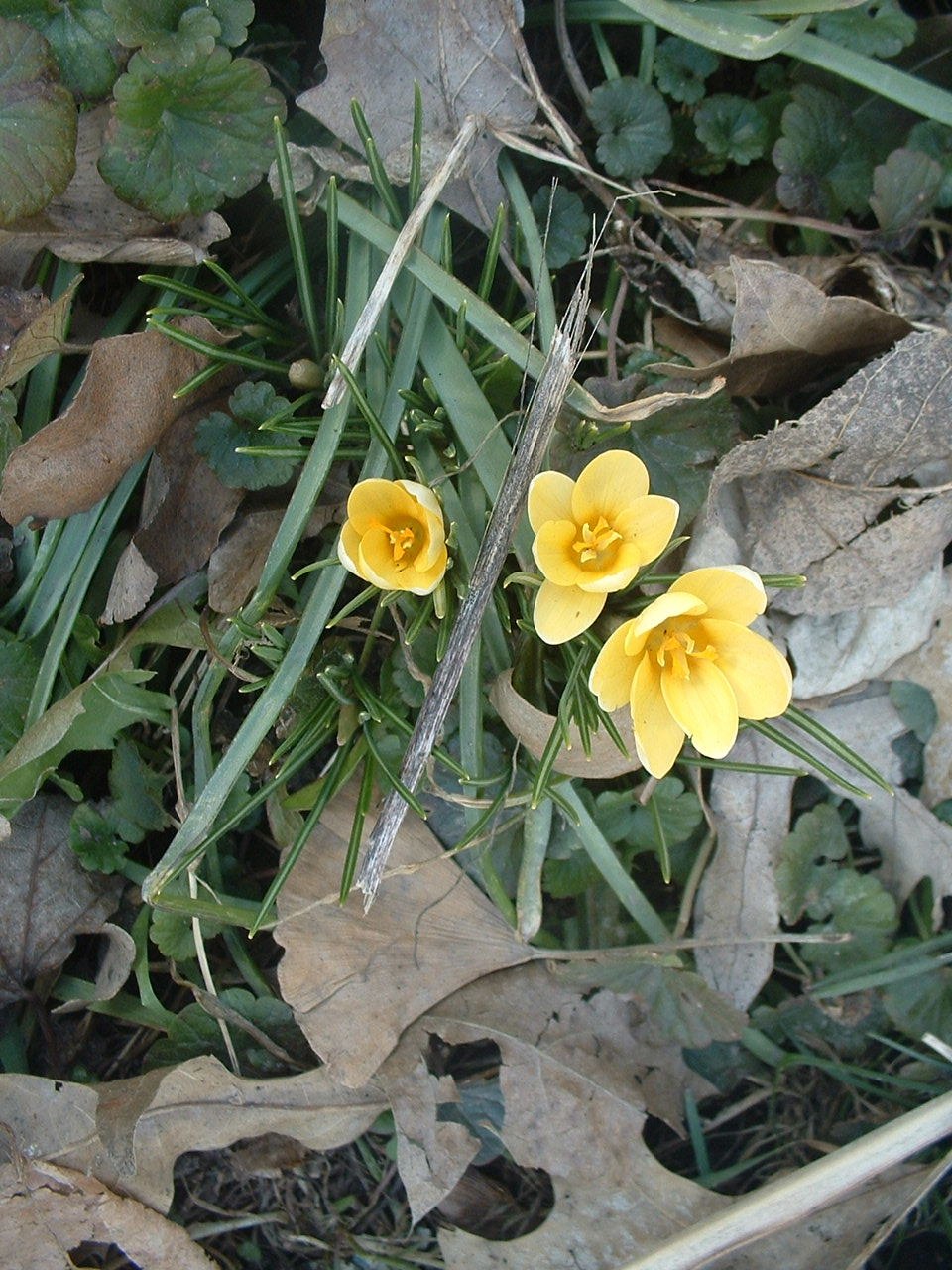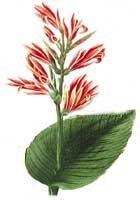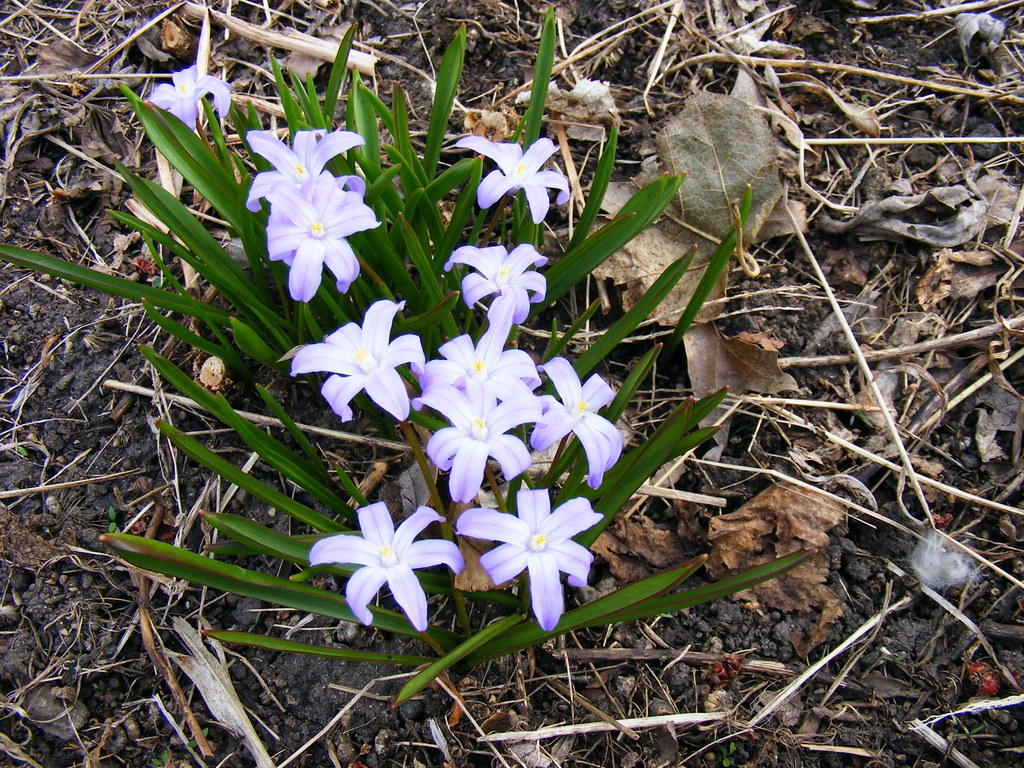
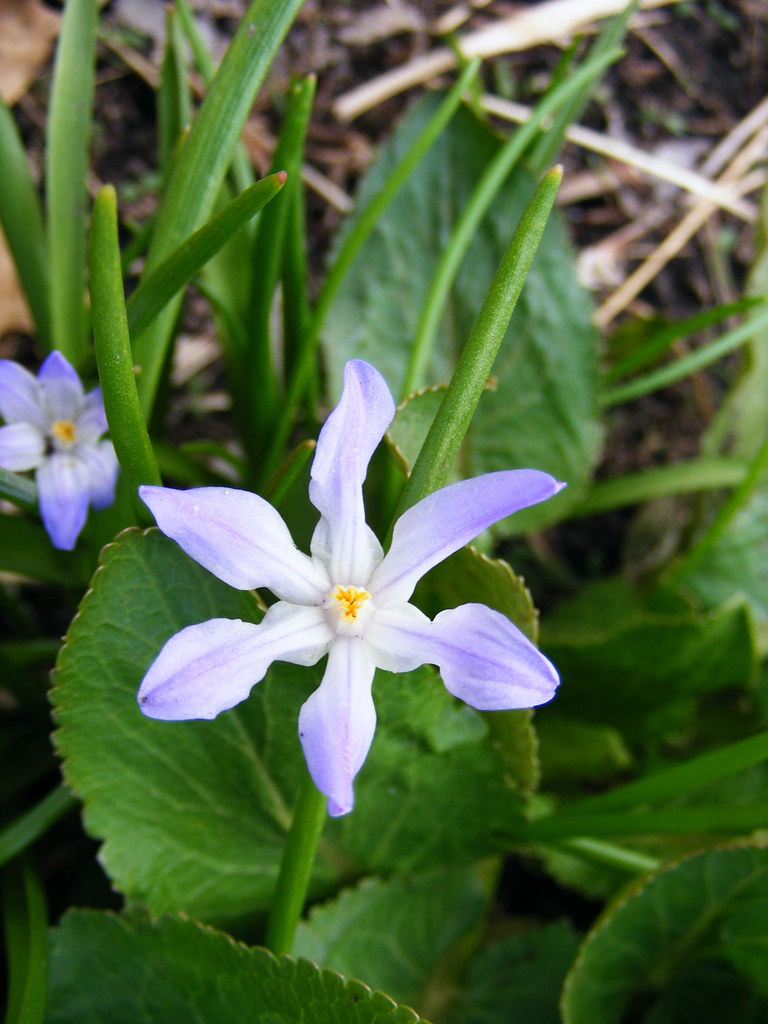 Chionodoxa forbesii 'Luciliae' (aka: Glory of the Snow, Star of Bethlehem, etc. ) is usually one of the first flowers to emerge along with Snowdrops and Crocus, though this year it was a bit tardy to appear because the spot they occupy in the main boulder bed stayed frozen much longer than sunnier areas out front ...
Chionodoxa forbesii 'Luciliae' (aka: Glory of the Snow, Star of Bethlehem, etc. ) is usually one of the first flowers to emerge along with Snowdrops and Crocus, though this year it was a bit tardy to appear because the spot they occupy in the main boulder bed stayed frozen much longer than sunnier areas out front ...In any case, it appears that, like other small bulbs closer to the surface, it managed to escape the ravages visited upon the Tulips and Fritillarias due to the severity of last year's long, late freeze and this past winter's nastiness. In fact, it has definitely expanded its clump since last year, much to my delight. I definitely want to get some more of these planted this fall, as the original spots I planted only contained about 3-4 bulbs each (they're small), because they are definitely happy naturalizers. I think they'd make excellent companions for Snowdrops, Crocus and Squill, with their pale blue stars that gradually fade to almost a pale lavender (see second shot). They're not the easiest subjects to shoot (at least for me!) ... not enough light and they look 'muddy blue' and too much sun makes them look bleached out. Just one of those flowers that needs to be seen in situ to truly appreciate the delicate hues of blue they exhibit ...
Carefree and every bit as easy to grow (and prolific) as Crocus, Squill and Snowdrops, they're worthy additions to any garden area ... the border or even in the lawn, where they do quite well, and are gone before you need to mow. Add this one to your list, Boran2 ... you won't regret it!
Photos taken 16 and 23 April, 2008 using the S700. The first shot (4-16) was taken while these were at their peak of blooming, whereas the second, taken a week later, as they were inevitably winding down.
